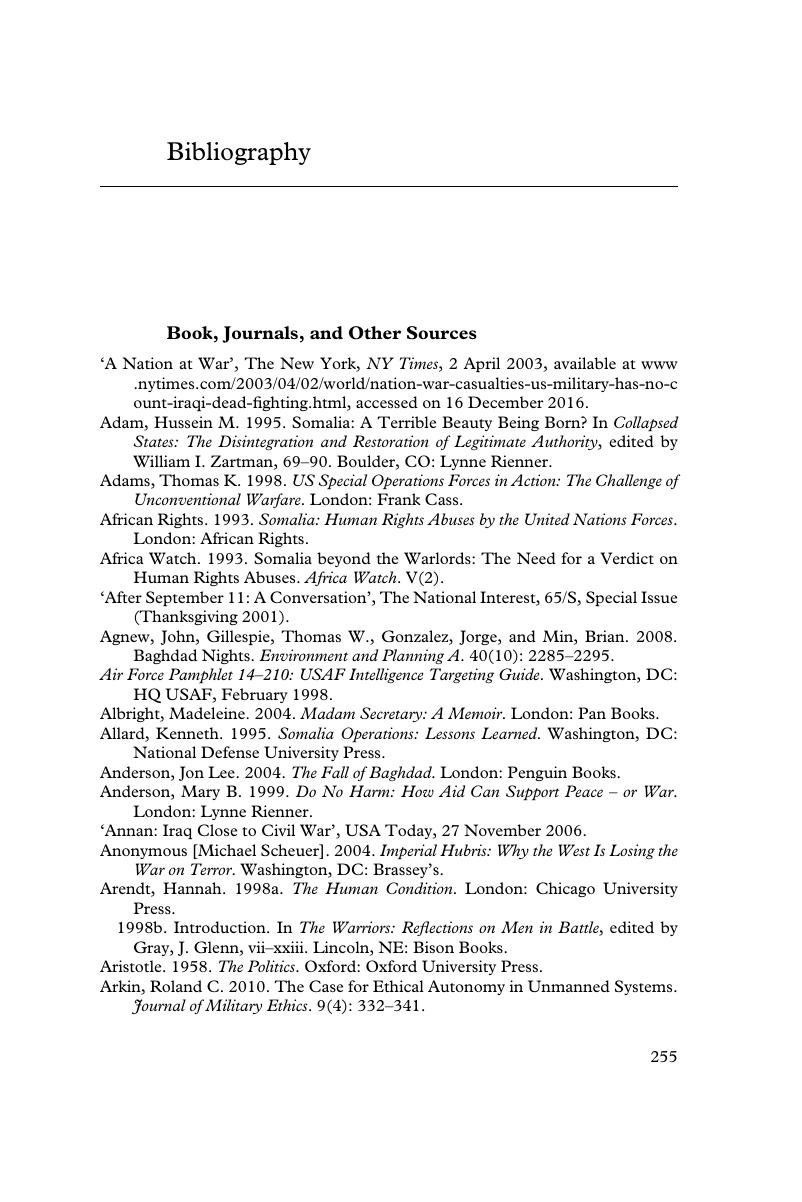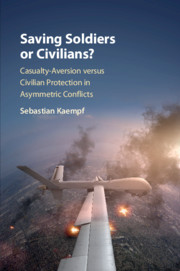Book contents
- Saving Soldiers or Civilians?
- Saving Soldiers or Civilians?
- Copyright page
- Dedication
- Contents
- Acknowledgements
- Abbreviations
- Interviewees
- Introduction
- 1 US Warfare and Civilian Protection
- 2 US Warfare and Casualty-Aversion
- 3 The Interactive Dynamics of Asymmetric Conflicts
- 4 The US Intervention in Somalia
- 5 The US War in Afghanistan
- 6 The US War in Iraq
- Conclusion
- Bibliography
- Index
- References
Bibliography
Published online by Cambridge University Press: 28 April 2018
- Saving Soldiers or Civilians?
- Saving Soldiers or Civilians?
- Copyright page
- Dedication
- Contents
- Acknowledgements
- Abbreviations
- Interviewees
- Introduction
- 1 US Warfare and Civilian Protection
- 2 US Warfare and Casualty-Aversion
- 3 The Interactive Dynamics of Asymmetric Conflicts
- 4 The US Intervention in Somalia
- 5 The US War in Afghanistan
- 6 The US War in Iraq
- Conclusion
- Bibliography
- Index
- References
Summary

- Type
- Chapter
- Information
- Saving Soldiers or Civilians?Casualty-Aversion versus Civilian Protection in Asymmetric Conflicts, pp. 255 - 283Publisher: Cambridge University PressPrint publication year: 2018



